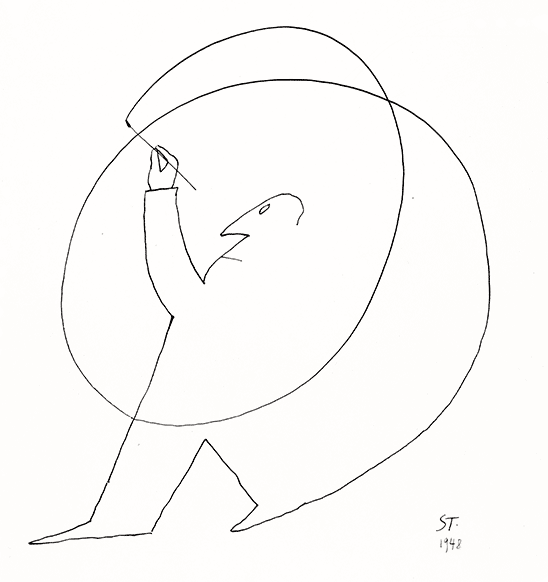1950
In the March and September issues of Flair, publishes influential inset booklets of “photoworks”—images that combine photography and drawing.
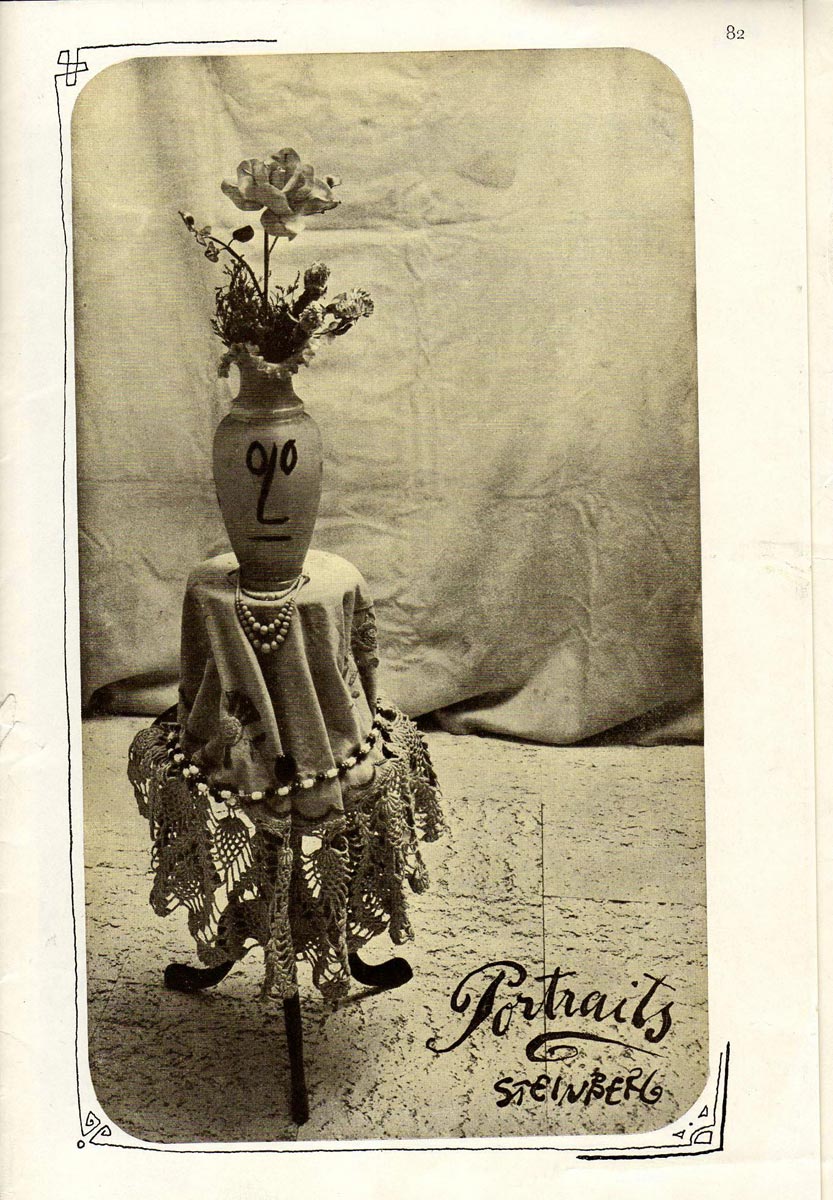
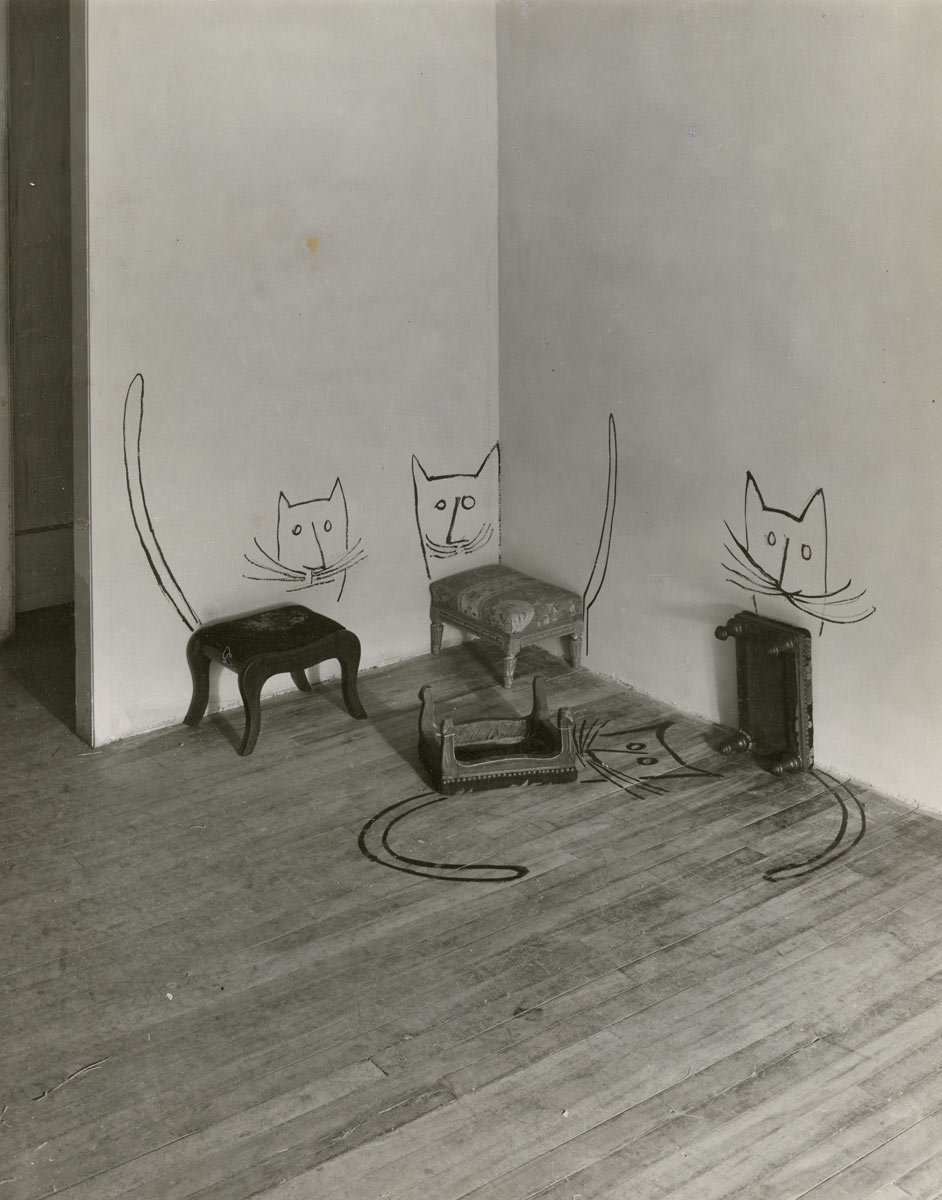
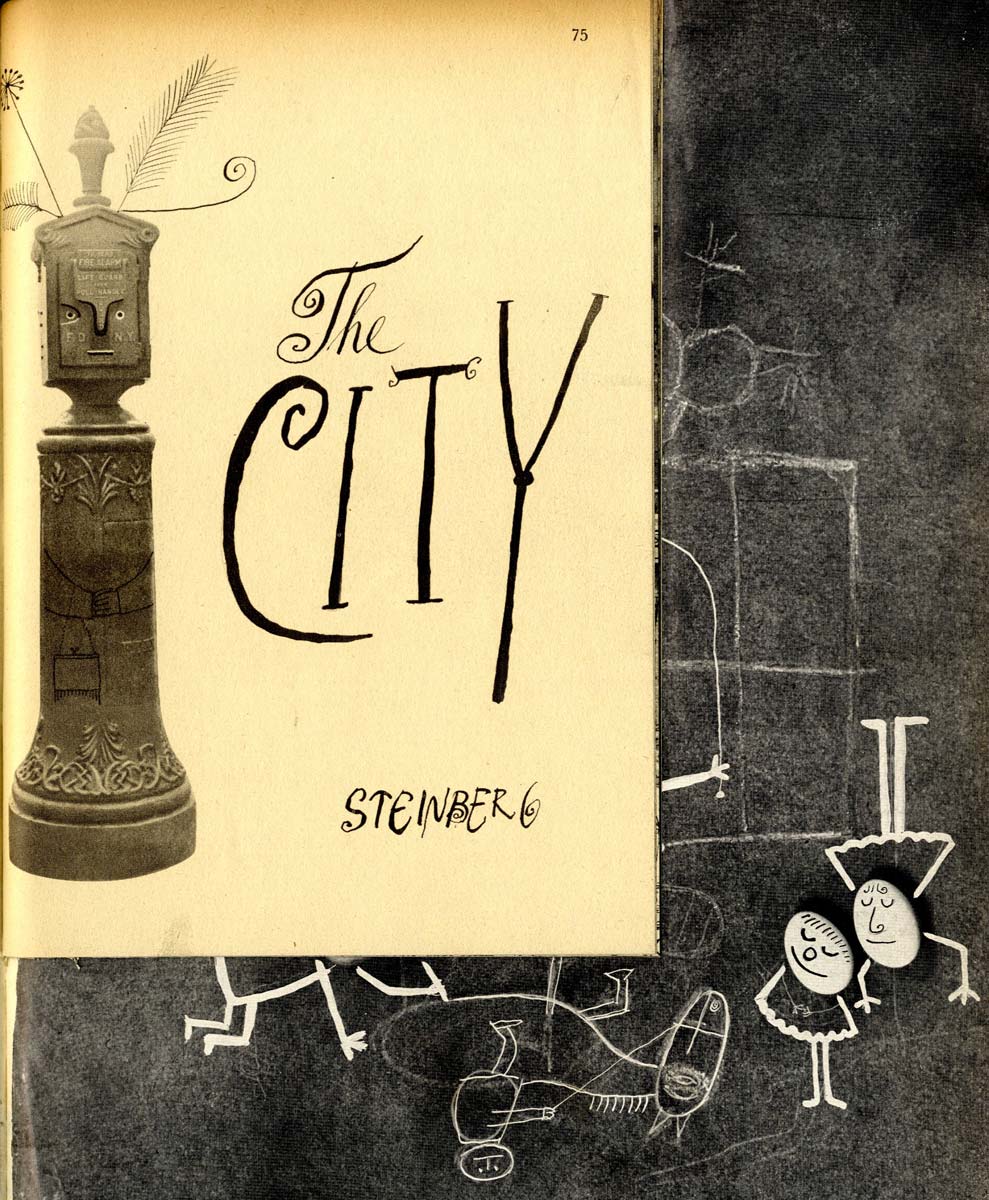
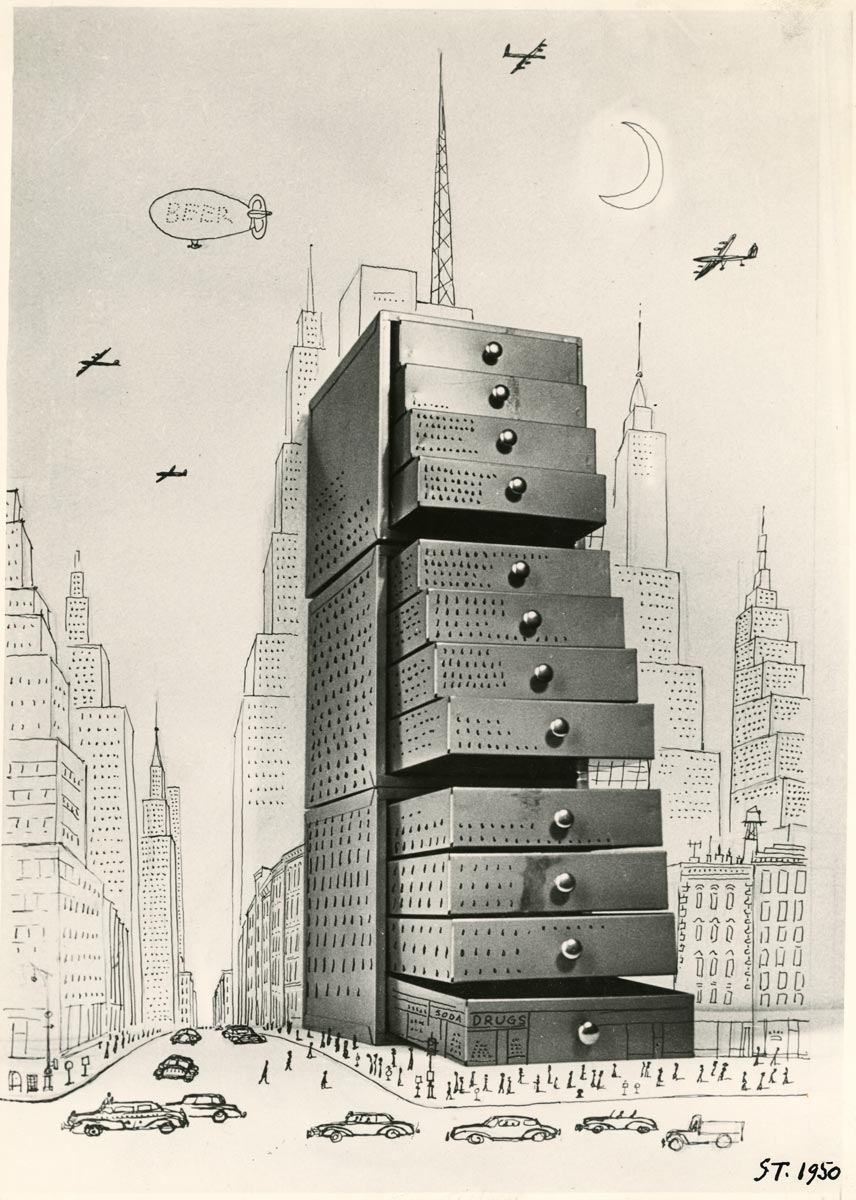
Summer, is hired to play Gene Kelly’s painting-hand in the film An American in Paris. Goes to Los Angeles with Hedda, rents a house in Brentwood, but walks off the film set on the first day. “They summoned me with great promises of ‘a free hand, do what you want,’ but they turned out to be the usual pricks who make Technicolor musicals, stupid stuff.”
ST and Hedda remain in Los Angeles for the summer, socializing with Kelly, Billy Wilder, Oscar Levant, Igor Stravinsky, Christopher Isherwood, and Charles and Ray Eames. ST makes sketches of the LA scene, which will be published in a New Yorker portfolio “The Coast” (January 27, 1951). “I’m doing a series of drawings on California,” he writes to Aldo Buzzi. “Quite difficult because the reality is too peculiar, as hard to draw as the circus, you must keep making an effort not to fall into clichés.”
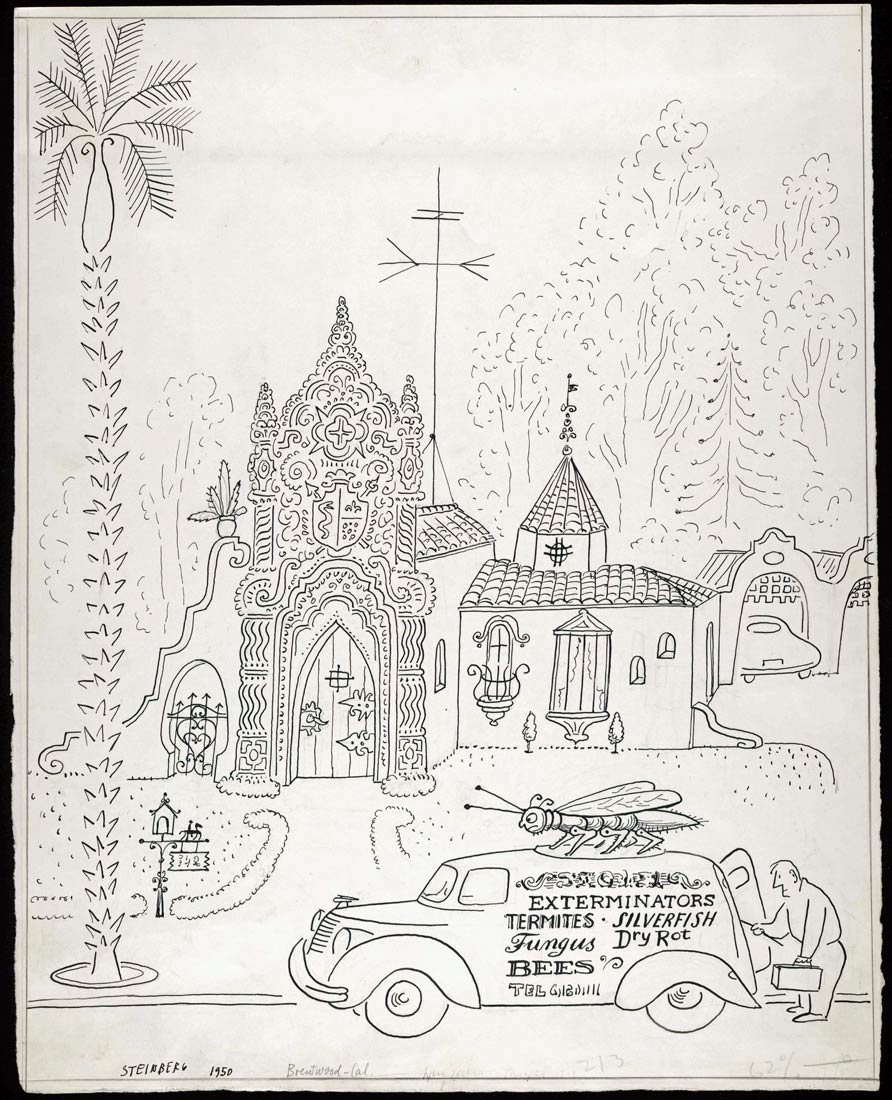
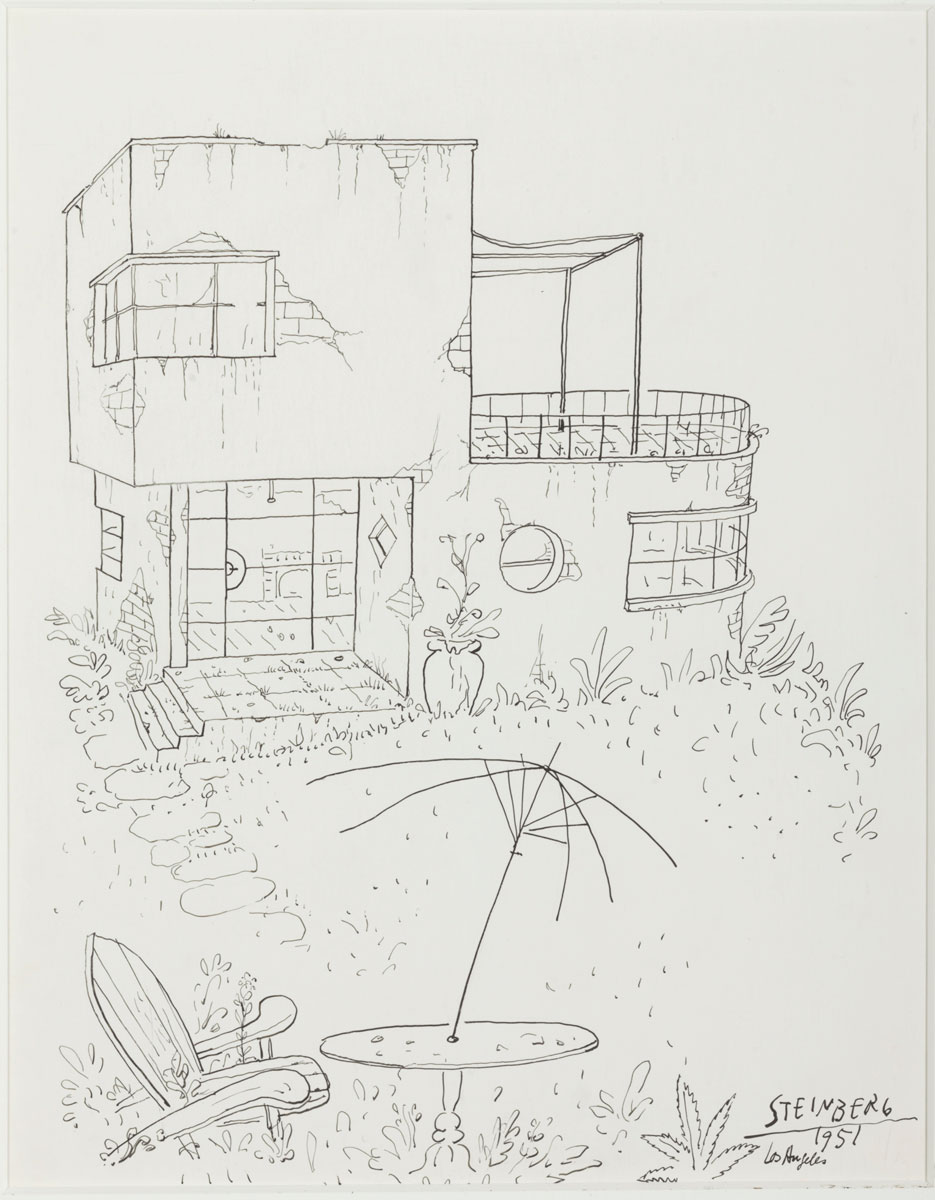
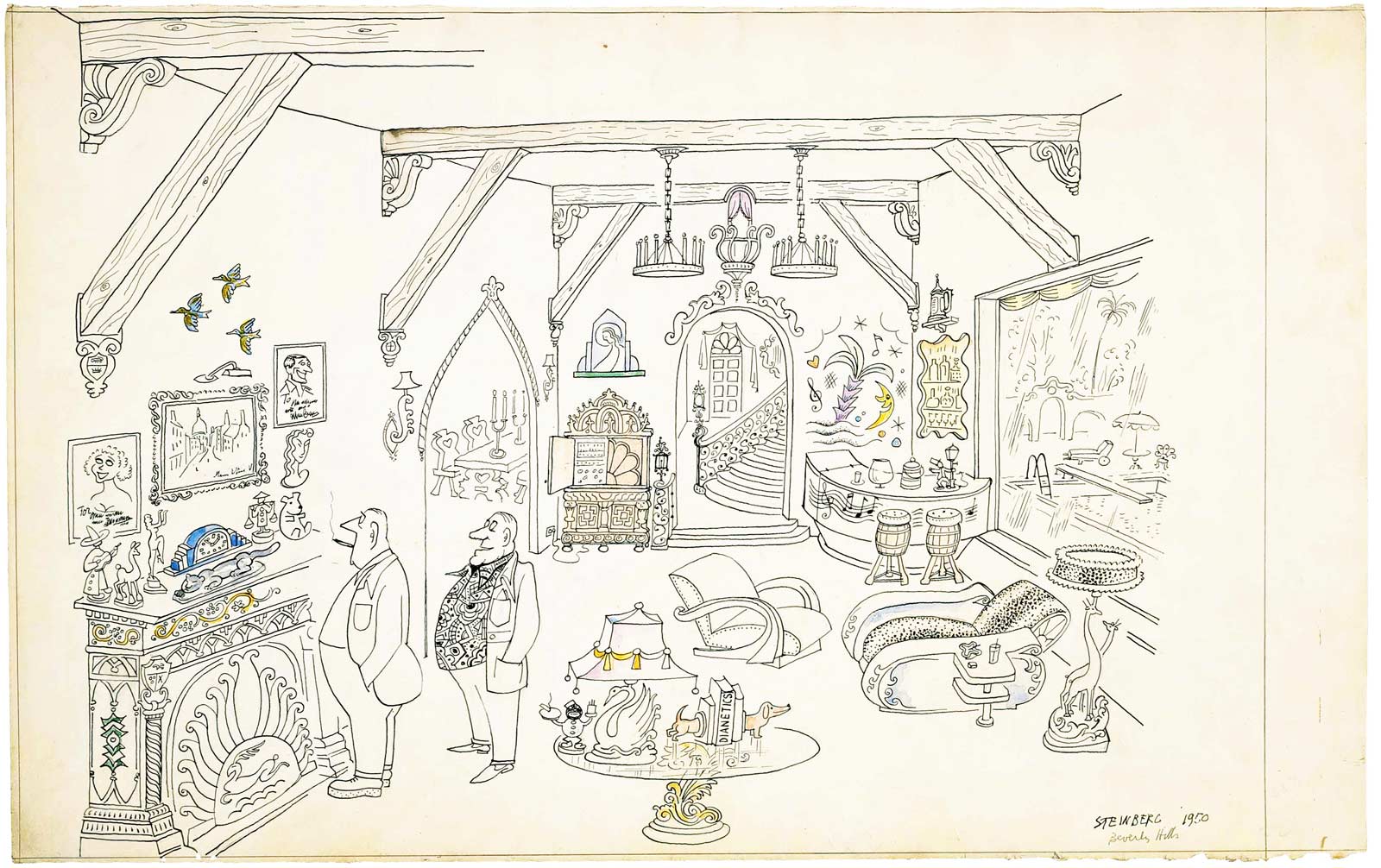
Eames proposes making a movie of an ST drawing (unrealized). ST visits the Eames Office in Venice, California, and adds drawn figures to Eames’s newly designed fiberglass armchairs and other chairs, the first in a series of such works.
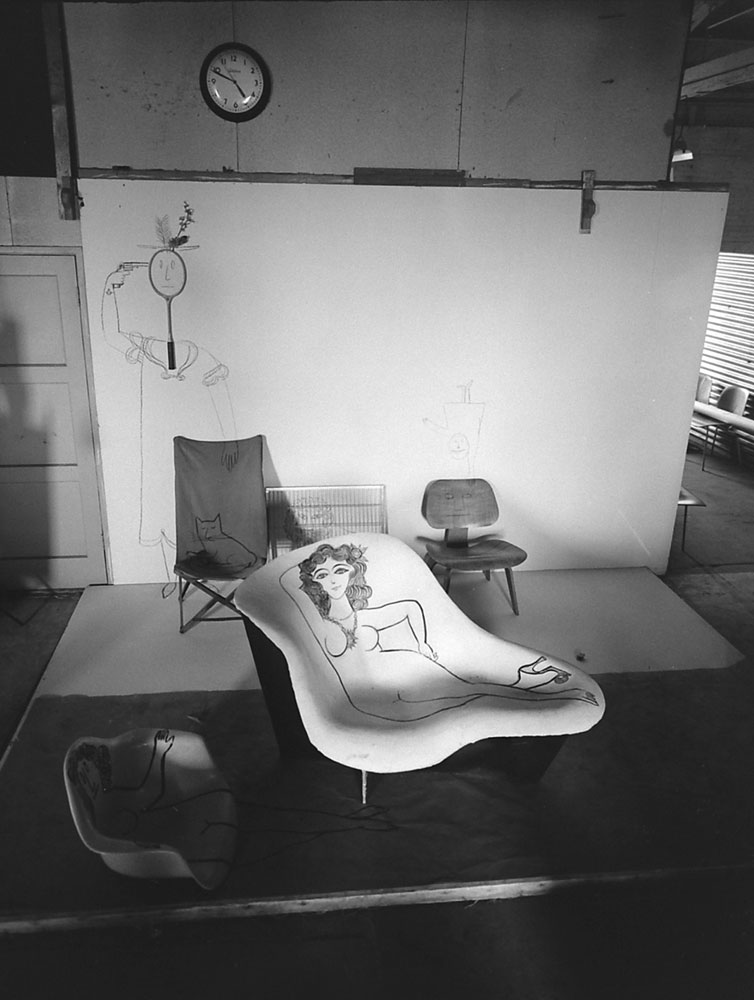
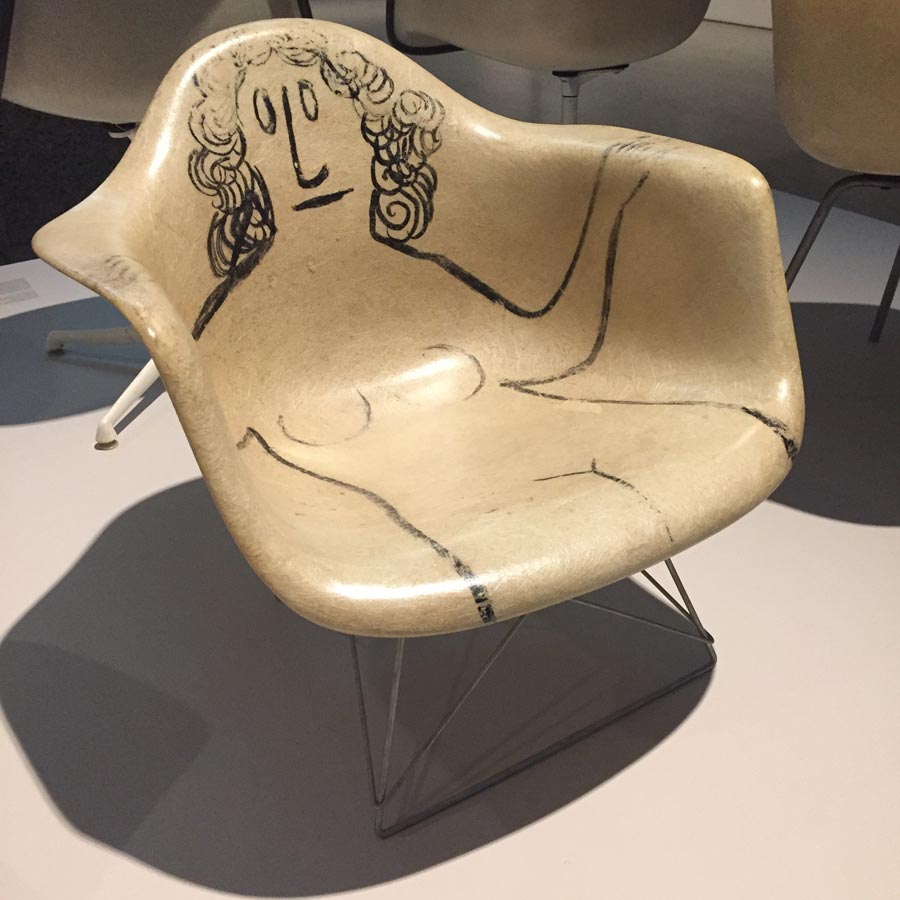
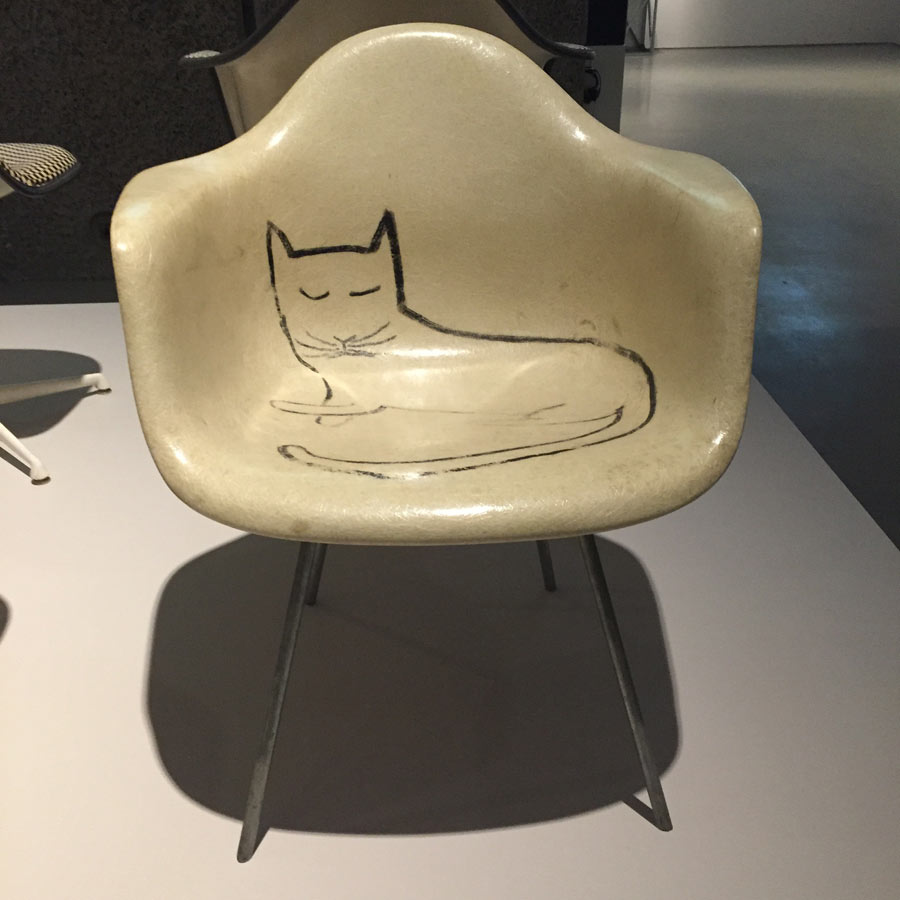
Returns to New York in early September, via bus to Denver and the Plains states; gambles in Las Vegas. He describes the trip to Aldo Buzzi: “In Las Vegas, in various gambling dens, I won two thousand dollars at the climax of 24 hours of continuous gambling (separately or simultaneously I played roulette, dice, chemin-de-fer, poker, and horse racing)….[Las Vegas] is the freest place in the world, I think. Every house is a casinò [gambling den] or a casino [brothel] or both.”
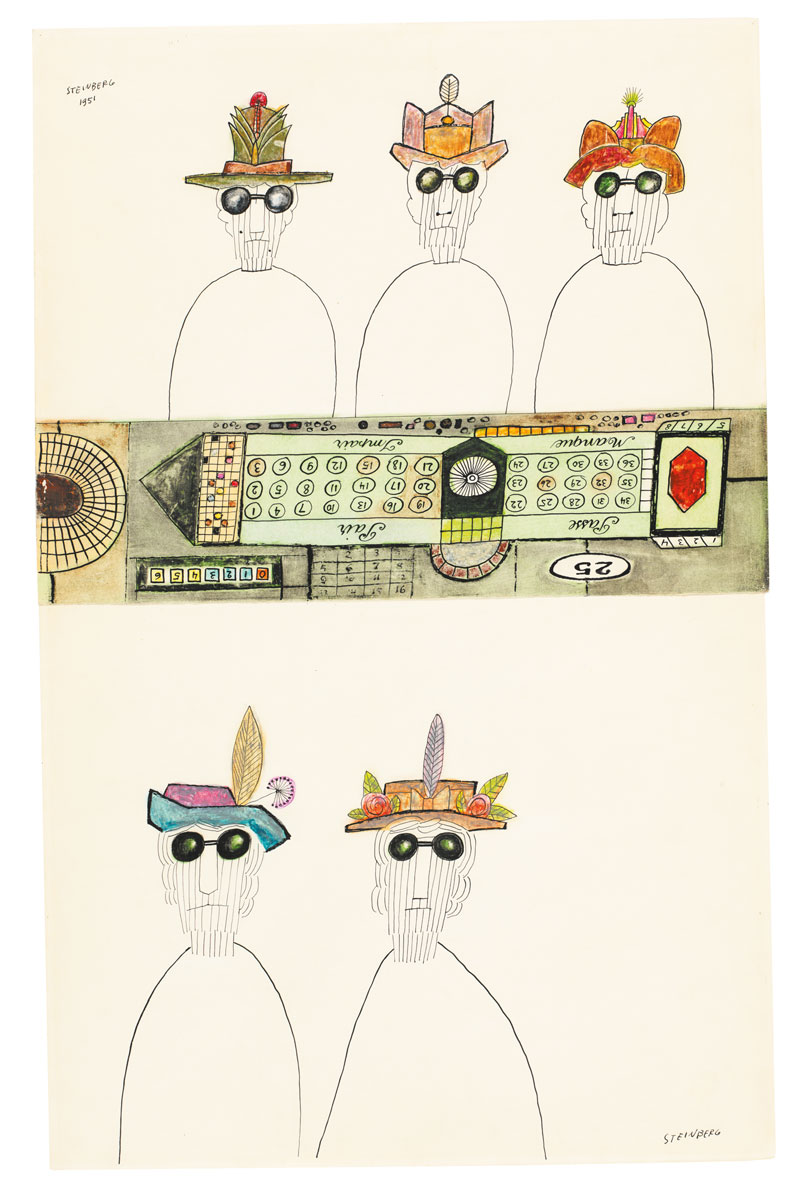
By December, still in the US Naval Reserve, fears being called up to serve in the Korean War.
